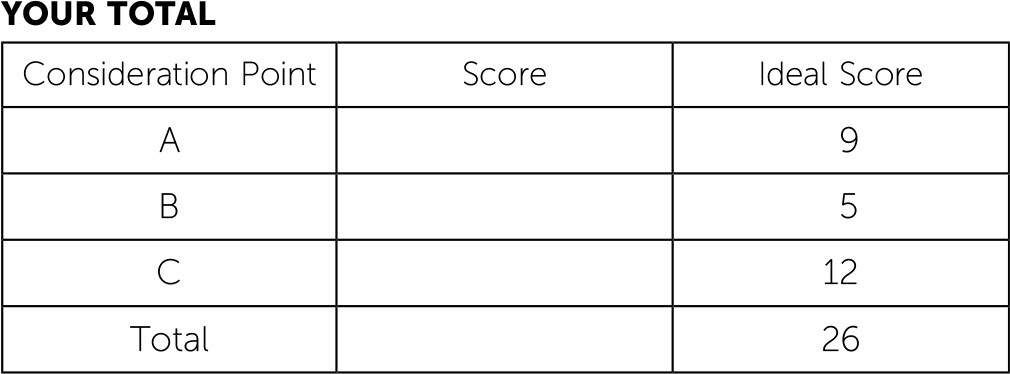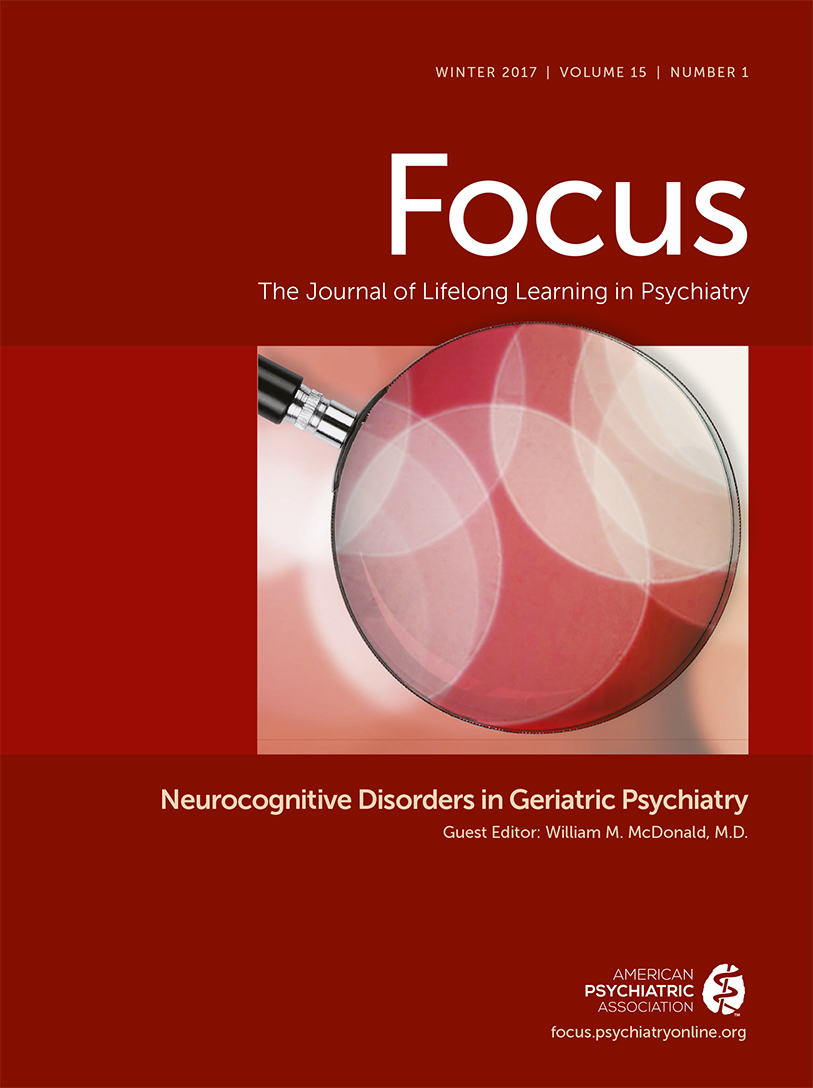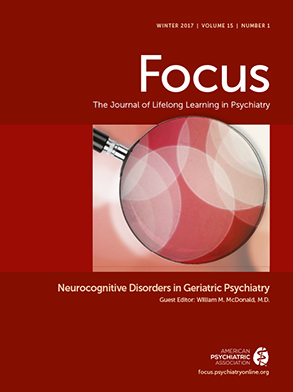Case Vignette
James Garcia is a 62-year-old male who was referred to you by his primary psychiatrist for a second opinion consultation regarding the management of a single episode of depression that has been refractory to treatments. The patient voiced his chief complaint as “something’s wrong with me—it seems I can’t be happy, and I can’t think straight anymore.” He was accompanied to the appointment by his wife of 35 years, who provided collateral history.
The patient reported that this episode began insidiously about four years previously, when he was 58 years old. He had been promoted at work, where he was an engineering supervisor at a defense contractor. The promotion increased his scope of responsibility and the number of decisions he needed to make, which led to an increase in the level of stress he experienced. After six months of feeling “stressed out,” he sought care with his primary care physician and eventually was prescribed zolpidem for his sleep difficulties. After three months, he was seen again and was given a prescription for sertraline; he also refilled his zolpidem. He took one dose of the antidepressant, had gastrointestinal side effects, and stopped taking it. A few days later, he took an overdose of zolpidem (29 of 30 pills) during the day and was found that evening when his wife returned from work. His wife described his condition when she found him as “semi-comatose.” She called the paramedics, who took him to a local general hospital.
Mr. Garcia was kept overnight and released the next day, with a diagnosis of accidental ingestion. That evening, he admitted to his family that the overdose had not been accidental but was actually a suicide attempt; his wife said he was sobbing and crying out, “Why am I still alive?” The next day, he was admitted for inpatient psychiatric care for 10 days and then transitioned to a partial hospital program, but he could manage to attend only two or three days a week because of functional impairments (“I just could not get out of bed to make it to the program every day”). He has been under the care of the referring psychiatrist since that time.
Case Vignette Continues
As you asked more questions about Mr. Garcia’s history, you learned that he had been seen by a neurologist at the time of his psychiatric hospitalization to evaluate any neurological reason for the depression and to assess whether he had experienced any neurological insult from the overdose. She had recommended electroencephalography and computed tomography imaging of his head, but the patient reported to you that the process of getting insurance company approval and setting up the appointments had proven to be “just too overwhelming to deal with” and so these tests were not obtained.
As you probed more, the patient characterized his experience as having virtually no interest in activities and a profound inability to concentrate well enough to read or make even minor decisions. He noted that his mood did not brighten at all, even with positive life events. Other target symptoms included anxiety, sleep disturbance (difficulty falling and staying asleep), decrease in appetite without noticeable weight loss in the past few weeks, very low energy, and feeling slow yet also fidgety. His wife added that his behavior at social gatherings had become unpredictably odd, in that he might laugh inappropriately at things others said or make inappropriate comments on other people’s attire. The patient did not dispute what his wife reported but did not react to this piece of collateral observation.
Mr. Garcia denied having current thoughts of death or any current plan or intent to commit suicide. He denied any past history consistent with hypomanic or manic episodes, psychosis, posttraumatic stress disorder, or social phobia. He denied any history of alcoholism or use of other substances, hallucinations, or delusions. The medical records from his inpatient stay included the observation that his intense worries at that time approached delusional proportions, for example, that being “sinfully lazy” had been at the root of his distress and that he was in jeopardy of being found out as “lazy and incompetent.” His family had confirmed at the time that these concerns did not accurately reflect his real-life work ethic, effort, or experience.
Mr. Garcia reported that no one else in his family had ever attempted suicide. His brother may have had bipolar disorder and substance use issues, but he and his brother had been estranged for many years after the brother drove while intoxicated with the patient’s then-teenage son in the backseat. Mr. Garcia’s father had died of liver cancer, and his mother had died from a pulmonary embolus. A maternal uncle had died of dementia doctors had diagnosed as Alzheimer’s disease.
While working with his primary psychiatrist, Mr. Garcia had tried treatment with several regimens, each for two to six months: citalopram (up to 20 mg per day); citalopram augmented with risperidone (4 mg per day); citalopram plus risperidone plus trazodone (100 mg every night at bedtime); citalopram, risperidone, trazodone, and bupropion (up to 300 mg per day); citalopram, risperidone, trazodone, bupropion, plus methylphenidate (20 mg every day before noon, 10 mg every day at noon); and then cross-tapering citalopram and replacing it with venlafaxine (venlafaxine 225 mg per day, while continuing risperidone, trazodone, bupropion, and methylphenidate). His symptoms had not had sustained improvement with any of these regimens.
On examination, Mr. Garcia was pleasant and cooperative, casually attired in drab clothing. Profound psychomotor slowing was noted, with a paucity of spontaneous movement. Eye contact was adequate but he stared into space at times, with long periods between blinks. Speech was of a slow rate and hypophonic volume, with some monotonous prosody. Affect was fatigued, sad, and drained. He characterized his mood as “anxious and irritable.” His thought process was slowed but logical and coherent. His thought content was free of hallucinations, delusions, or current suicidal or homicidal intent; he denied any intention or plan of suicide or other self-injurious behaviors. Cognitively, he was awake; alert; and oriented to person, place, date, and circumstances. Memory registration was intact with three out of three stimuli, and recall after delay was three out of three items. He was able to spell world forward and backward accurately. His similarities were a mix of abstract interpretations (apple/orange were both “fruit”; watch/ruler were both “used for measurement”) and more concrete (chair/table were both “wood”). He had some difficulty repeating the phrase “no ifs, ands, or buts.” His insight was intact, in that he recognized that he was depressed, needed treatment, and was still markedly ill despite prior treatments with medication. His judgment was intact, in that he was seeking care for depression, wished to return to wellness and to be able to work, and was able to contemplate potential risks and side effects and anticipate benefits of additional treatments. No tremors or involuntary movements were noted; his movements were characterized by profound slowing with reduced arm swing. He had difficulty maintaining his balance when his eyes were closed. Although his gait was slow, it was not festinating, nor did he exhibit en bloc turning, marche à petit pas, or difficulty starting or stopping.
His score on the 30-item Inventory of Depressive Symptomology, clinician-rated version, was 31 and on the Patient Health Questionnaire was 14, consistent with moderate symptom severity.


